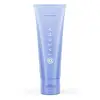What's inside
What's inside
 Key Ingredients
Key Ingredients

 Benefits
Benefits

 Concerns
Concerns

 Ingredients Side-by-side
Ingredients Side-by-side

Water
Skin ConditioningMicrocrystalline Cellulose
AbsorbentPropanediol
SolventSodium Cocoyl Glutamate
CleansingGlycerin
HumectantAcrylates Copolymer
Sodium Caproyl Methyltaurate
CleansingCoco-Betaine
CleansingParfum
MaskingCamellia Sinensis Leaf
PerfumingOryza Sativa Powder
Chondrus Crispus Extract
Skin ConditioningSodium Hyaluronate
HumectantBetaphycus Gelatinum Extract
BleachingLauryl Glucoside
CleansingPotassium Hydroxide
BufferingPolyquaternium-39
Disodium EDTA
Phenoxyethanol
PreservativeEthylhexylglycerin
Skin ConditioningSodium Benzoate
MaskingSodium Carbonate
BufferingAlcohol
AntimicrobialWater, Microcrystalline Cellulose, Propanediol, Sodium Cocoyl Glutamate, Glycerin, Acrylates Copolymer, Sodium Caproyl Methyltaurate, Coco-Betaine, Parfum, Camellia Sinensis Leaf, Oryza Sativa Powder, Chondrus Crispus Extract, Sodium Hyaluronate, Betaphycus Gelatinum Extract, Lauryl Glucoside, Potassium Hydroxide, Polyquaternium-39, Disodium EDTA, Phenoxyethanol, Ethylhexylglycerin, Sodium Benzoate, Sodium Carbonate, Alcohol
Water
Skin ConditioningGlycerin
HumectantCocamidopropyl Hydroxysultaine
CleansingSodium Cocoyl Isethionate
CleansingMagnesium Aluminum Silicate
AbsorbentPolyglyceryl-3 Methylglucose Distearate
EmulsifyingSodium Methyl Cocoyl Taurate
CleansingAvena Sativa Kernel Oil
Skin ConditioningPCA
HumectantGlyceryl Oleate
EmollientSaccharide Isomerate
HumectantButyrospermum Parkii Butter
Skin ConditioningCetearyl Alcohol
EmollientGlyceryl Stearate
EmollientMoringa Oleifera Seed Oil
EmollientAloe Barbadensis Leaf Juice
Skin ConditioningLinoleic Acid
CleansingPyrus Malus Fruit Extract
Skin ConditioningCoco-Glucoside
CleansingSodium Chloride
MaskingCoconut Acid
CleansingSodium Polyacryloyldimethyl Taurate
Emulsion StabilisingHydroxyacetophenone
Antioxidant1,2-Hexanediol
Skin ConditioningCaprylyl Glycol
EmollientSodium Isethionate
CleansingPalmitic Acid
EmollientLinolenic Acid
CleansingSodium Citrate
BufferingStearic Acid
CleansingTocopherol
AntioxidantSodium Methyltaurate
Skin ConditioningOleic Acid
EmollientQuartz
AbrasiveXanthan Gum
EmulsifyingHydrogenated Palm Glycerides Citrate
EmollientPotassium Sorbate
PreservativeSodium Benzoate
MaskingCitric Acid
BufferingWater, Glycerin, Cocamidopropyl Hydroxysultaine, Sodium Cocoyl Isethionate, Magnesium Aluminum Silicate, Polyglyceryl-3 Methylglucose Distearate, Sodium Methyl Cocoyl Taurate, Avena Sativa Kernel Oil, PCA, Glyceryl Oleate, Saccharide Isomerate, Butyrospermum Parkii Butter, Cetearyl Alcohol, Glyceryl Stearate, Moringa Oleifera Seed Oil, Aloe Barbadensis Leaf Juice, Linoleic Acid, Pyrus Malus Fruit Extract, Coco-Glucoside, Sodium Chloride, Coconut Acid, Sodium Polyacryloyldimethyl Taurate, Hydroxyacetophenone, 1,2-Hexanediol, Caprylyl Glycol, Sodium Isethionate, Palmitic Acid, Linolenic Acid, Sodium Citrate, Stearic Acid, Tocopherol, Sodium Methyltaurate, Oleic Acid, Quartz, Xanthan Gum, Hydrogenated Palm Glycerides Citrate, Potassium Sorbate, Sodium Benzoate, Citric Acid
 Reviews
Reviews

Ingredients Explained
These ingredients are found in both products.
Ingredients higher up in an ingredient list are typically present in a larger amount.
Glycerin is already naturally found in your skin. It helps moisturize and protect your skin.
A study from 2016 found glycerin to be more effective as a humectant than AHAs and hyaluronic acid.
As a humectant, it helps the skin stay hydrated by pulling moisture to your skin. The low molecular weight of glycerin allows it to pull moisture into the deeper layers of your skin.
Hydrated skin improves your skin barrier; Your skin barrier helps protect against irritants and bacteria.
Glycerin has also been found to have antimicrobial and antiviral properties. Due to these properties, glycerin is often used in wound and burn treatments.
In cosmetics, glycerin is usually derived from plants such as soybean or palm. However, it can also be sourced from animals, such as tallow or animal fat.
This ingredient is organic, colorless, odorless, and non-toxic.
Glycerin is the name for this ingredient in American English. British English uses Glycerol/Glycerine.
Learn more about GlycerinSodium Benzoate is a preservative. It's used in both cosmetic and food products to inhibit the growth of mold and bacteria. It is typically produced synthetically.
Both the US FDA and EU Health Committee have approved the use of sodium benzoate. In the US, levels of 0.1% (of the total product) are allowed.
Sodium benzoate works as a preservative by inhibiting the growth of bacteria inside of cells. It prevents the cell from fermenting a type of sugar using an enzyme called phosphofructokinase.
It is the salt of benzoic acid. Foods containing sodium benzoate include soda, salad dressings, condiments, fruit juices, wines, and snack foods.
Studies for using ascorbic acid and sodium benzoate in cosmetics are lacking, especially in skincare routines with multiple steps.
We always recommend speaking with a professional, such as a dermatologist, if you have any concerns.
Learn more about Sodium BenzoateWater. It's the most common cosmetic ingredient of all. You'll usually see it at the top of ingredient lists, meaning that it makes up the largest part of the product.
So why is it so popular? Water most often acts as a solvent - this means that it helps dissolve other ingredients into the formulation.
You'll also recognize water as that liquid we all need to stay alive. If you see this, drink a glass of water. Stay hydrated!
Learn more about Water